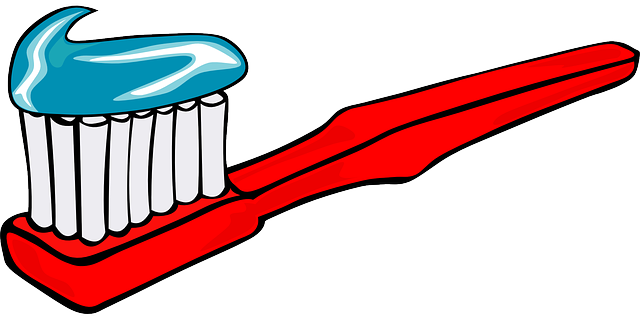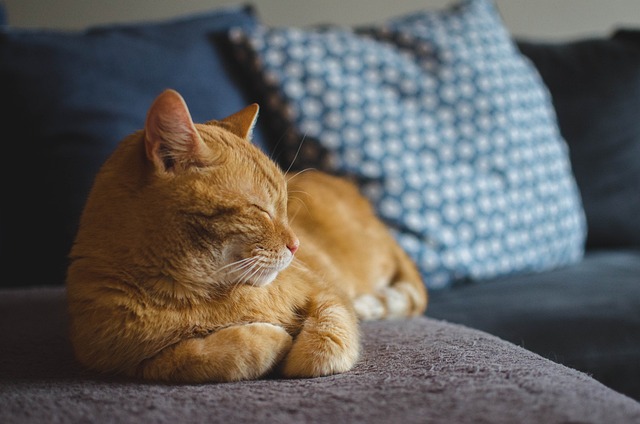To brush a cat’s teeth, use a pet toothbrush and toothpaste, gently brush in circular motions. Proper dental care is essential for your cat’s overall health and well-being.
Just like humans, cats require regular dental care to prevent dental issues such as plaque build-up and gingivitis. Brushing your cat’s teeth may seem daunting at first, but with patience and practice, it can become a routine part of your pet care regimen.
We will discuss the importance of dental hygiene for cats, how to brush your cat’s teeth properly, and tips for making the process easier for both you and your feline friend.
The Importance Of Dental Care In Cats
Proper dental care for cats is crucial for their overall health. Regular tooth brushing can prevent dental issues and maintain good oral hygiene in cats. Use a specially designed toothbrush and toothpaste for cats, and introduce brushing gradually to make it a positive experience for your feline friend.
Risks Of Poor Feline Oral Hygiene

Benefits Of Regular Teeth Brushing
Pre-brushing Preparation
Pre-Brushing Preparation:
Choosing The Right Supplies
When selecting supplies for brushing your cat’s teeth, opt for soft-bristled toothbrushes and toothpaste formulated specifically for felines.
Creating A Calming Environment

To create a calming environment, choose a quiet space with minimal distractions for your cat’s brushing routine.
Introducing Your Cat To Toothbrushing
Introducing your cat to toothbrushing can be a gradual process that requires patience and positive reinforcement. Start by getting your cat comfortable with the idea of having their teeth brushed. Here are some step-by-step acclimatization techniques and positive reinforcement methods to help make the process as smooth as possible.
Step-by-step Acclimatization
When introducing your cat to toothbrushing, it’s important to take it slow. Begin by simply getting your cat used to having their mouth touched. Gently lift their lip and touch their teeth and gums with your finger. Repeat this process daily until your cat is comfortable with the sensation.
Next, introduce a pet toothbrush to your cat. Let them sniff and investigate the toothbrush without any pressure. Gradually, start brushing their teeth with a small amount of pet toothpaste. Gradually increase the duration of the brushing sessions as your cat becomes more comfortable.
Positive Reinforcement Techniques
Positive reinforcement is key to successfully introducing your cat to toothbrushing. Reward your cat with treats or praise after each brushing session to create a positive association with the experience. Use gentle and soothing tones to reassure your cat during the process.
Additionally, consider using dental treats or toys that promote oral hygiene. These can serve as a reward for your cat and help maintain their dental health between brushing.
Selecting The Appropriate Toothpaste
When it comes to selecting the appropriate toothpaste for your cat, it’s essential to consider their specific needs and preferences. Choosing the right toothpaste is crucial for maintaining your cat’s oral health and ensuring a positive brushing experience.
Ingredients To Look For

- Enzymes: Helps break down plaque and prevent tartar build-up.
- Antibacterial agents: Aid in reducing harmful bacteria in the mouth.
- Fluoride-free: Prevents ingestion of harmful substances by your cat.
Flavours Cats Love
- Chicken: Popular flavour that many cats enjoy.
- Seafood: Appealing taste for most felines.
- Mint: Freshens breath while still being palatable for cats.
The Brushing Technique
The Brushing Technique: Proper brushing is essential for your cat’s dental health. It’s crucial to follow the right technique to ensure effective cleaning.
Holding Your Cat Safely
Secure your cat on a stable surface to prevent them from wriggling during brushing sessions.
Gentle Brushing Motions
Use gentle circular motions to brush your cat’s teeth, focusing on the gum line.
Post-brushing Routine
After successfully brushing your cat’s teeth, it’s important to carry out a post-brushing routine to ensure their dental health is maintained. This routine includes rewarding your cat, cleaning the brush and supplies, and ensuring a comfortable environment for your feline friend.
Rewarding Your Cat
Once the brushing is complete, reward your cat with a tasty treat or a favourite toy. This positive reinforcement will help your cat associate tooth brushing with a pleasant experience, making future brushing sessions more manageable.
Cleaning The Brush And Supplies
After each use, it’s crucial to clean the toothbrush and any other supplies used for the brushing process. Rinse the toothbrush thoroughly with water, and if necessary, use a pet-safe cleaning solution to disinfect it. Store the toothbrush and other supplies in a clean, dry area to prevent the growth of bacteria.
Addressing Challenges And Behavioural Issues
Cats may resist having their teeth brushed, but patience is key. Start by getting your cat acquainted with the toothbrush and toothpaste gradually.
If your cat continues to show resistance or exhibits severe behavioural issues during tooth brushing, it’s wise to seek advice from a veterinarian.
Maintaining Consistency
Consistency is key when it comes to maintaining your cat’s dental hygiene. Establishing a regular brushing schedule and keeping track of dental health progress are essential for ensuring your cat’s teeth stay healthy and clean.
Establishing A Brushing Schedule
To maintain consistency in brushing your cat’s teeth, it’s important to establish a regular schedule. Brush your cat’s teeth at the same time every day to create a routine that your cat can become accustomed to. Choose a time when your cat is relaxed, such as after a meal or during a calm period of the day. By making brushing a part of your cat’s daily routine, you can ensure that it becomes a familiar and stress-free experience for your feline friend.
Keeping Track Of Dental Health Progress
Consistently monitoring your cat’s dental health progress is crucial for identifying any issues early on. Keep a record of your cat’s dental care routine, including the frequency of brushing, any signs of tartar build up, and any changes in your cat’s behaviour during brushing sessions. This will help you track improvements or any potential concerns, enabling you to take proactive steps to address any dental issues that may arise.
Professional Dental Care For Cats
Find the importance of professional dental care for cats by learning how to brush your cat’s teeth effectively. Regular brushing can prevent dental issues and promote your cat’s overall health and well-being. Follow these simple steps to make dental care a routine part of your cat’s grooming regimen.
Cats are susceptible to dental problems just like humans. Their dental issues can range from bad breath to periodontal disease. It is important to take care of your cat’s dental health to prevent these issues. While brushing your cat’s teeth regularly is a great way to maintain their dental hygiene, sometimes it is necessary to seek professional dental care. In this blog post, we will discuss when to seek professional cleaning and understanding dental procedures for cats.
When To Seek Professional Cleaning
Professional dental care is necessary if your cat has severe dental issues that cannot be treated by regular brushing. In addition, certain breeds of cats are more prone to dental issues. For example, Persian cats are more likely to develop periodontal disease. Some signs that your cat may need professional dental care include bad breath, loose teeth, bleeding gums, and difficulty eating. If you notice any of these symptoms, it is important to take your cat to the veterinarian for a dental checkup.
Understanding Dental Procedures For Cats
Professional dental cleaning for cats is similar to that for humans. The procedure involves a thorough cleaning of the teeth and gums, including scaling and polishing. However, the major difference is that cats require general anaesthesia for the procedure. This is because they cannot sit still and are likely to become anxious during the process. Before the procedure, your veterinarian will perform a physical exam and blood work to ensure that your cat is healthy enough for anaesthesia. Once your cat is under anaesthesia, the vet will clean the teeth and gums, remove any tartar or plaque, and polish the teeth. After the procedure, your cat may need to take antibiotics to prevent infection.
In conclusion, professional dental care is an important part of maintaining your cat’s dental health. It is important to seek professional care if your cat has severe dental problems or is showing signs of dental issues. Understanding the dental procedures for cats will help you prepare your cat for the procedure and ensure that they are healthy and happy. Remember to brush your cat’s teeth regularly and take them for regular dental checkups to prevent dental issues.
Frequently Asked Questions
Are You Supposed To Brush Your Cat’s Teeth?
Yes, it’s recommended to brush your cat’s teeth regularly to prevent dental issues. Use a pet-specific toothbrush and toothpaste.
How To Brush Cats’ Teeth When They Refuse?
To brush a cat’s teeth when they refuse, try using a finger brush or dental wipes. Gradually introduce the brushing process, offering rewards and positive reinforcement. Patience and consistency are key to success. Consult a veterinarian for additional tips and professional dental care.
Is It Too Late To Start Brushing My Cat’s Teeth?
No, it’s never too late to start brushing your cat’s teeth. Even if your cat is an adult, you can slowly introduce tooth brushing to their routine. Use a soft-bristled toothbrush and cat-friendly toothpaste, and be patient and gentle. Regular brushing can prevent dental problems and improve your cat’s overall health.
What Can I Use To Brush My Cat’s Teeth If I Don’t Have Cat Toothpaste?
You can use a soft-bristled toothbrush or gauze pad to clean your cat’s teeth if you don’t have cat toothpaste. Just use water or a mixture of water and a small amount of baking soda to brush their teeth gently.
Proper dental care is essential for your cat’s overall health and wellbeing. By following the steps outlined in this guide, you can ensure that your feline friend maintains good oral hygiene. Regular brushing, dental check-ups, and a balanced diet are key to preventing dental issues.
